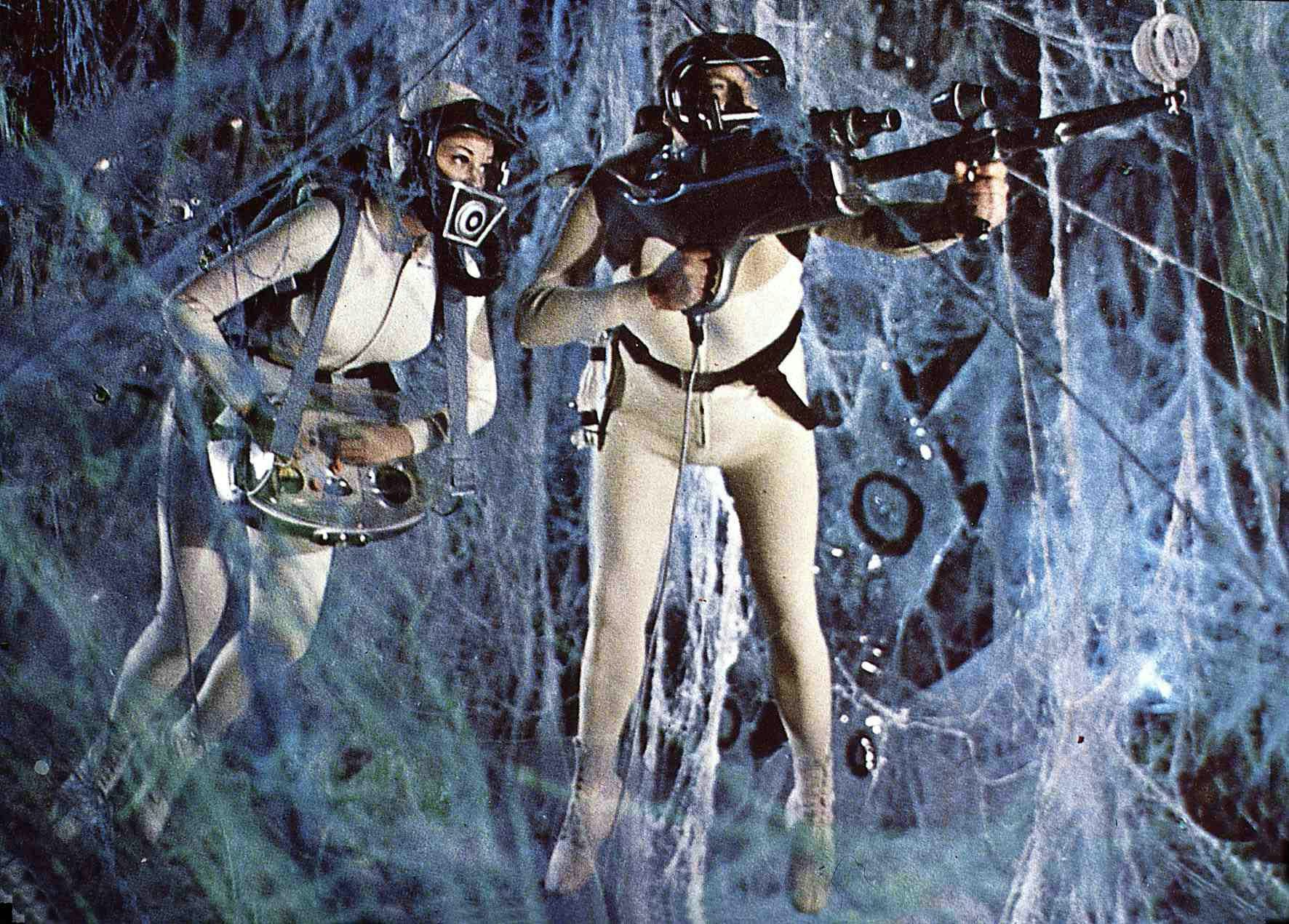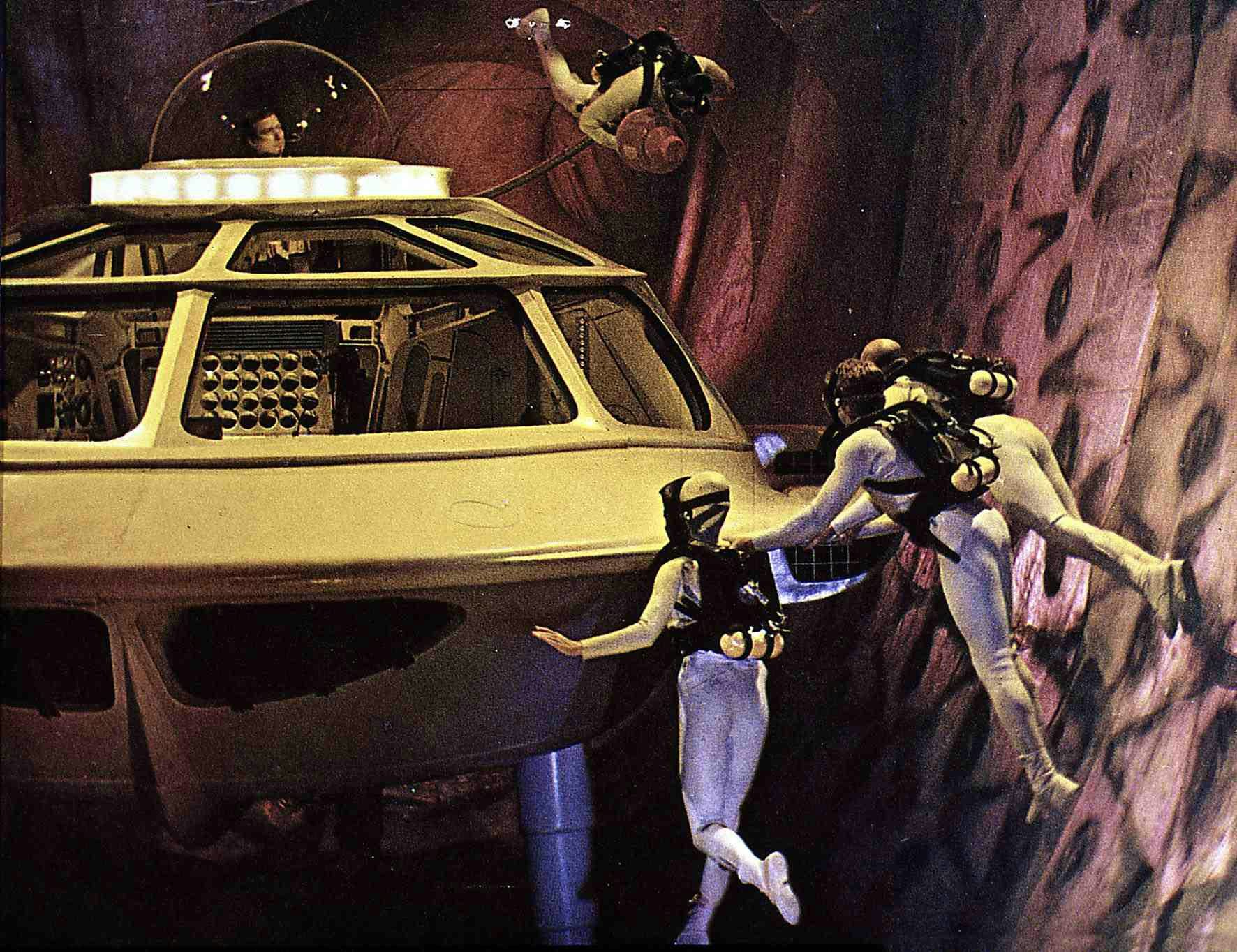
The 1966 sci-fi film Fantastic Voyage is probably more famous for what it inspired rather than what it is. From several parodies and homages (including South Park and the film Innerspace) to the immortal Coolio song of the same name, the legacy of Fantastic Voyage — a movie about a miniaturized submarine getting injected into a human body — far outweighs any love for the film itself.
There are many reasons for this funny incongruity, but the mixed public perception of Fantastic Voyage probably started on February 26, 1966, when a print version of the story appeared in the Saturday Evening Post nearly half a year before the movie dropped on August 16, 1966. Serialized in episodic installments in the Post until March of that year, Fantastic Voyage was written by science fiction legend Isaac Asimov. Except it wasn’t. The book version was written by Asimov, but the movie wasn’t based on his writing. The script for the movie came first and then Asimov was asked to write a novelization based on that script. This led to many people erroneously believing that Asimov came up with the idea for Fantastic Voyage, even though he didn’t.
In fact, somewhat infamously, Asimov didn’t want to write the novelization at first, mostly because he felt the central sci-fi conceit — miniaturization — was too silly. Today we don’t remember the Asimov novel as well as the film, and there’s perhaps one good reason: The movie works because it still looks great and has aged much better than Asimov’s prose version.
In both versions, the story is this: In the ‘60s, a Soviet scientist named Dr. Jan Benes defects to the U.S., in order to give the country his latest version of miniaturization technology. Dr. Benes is gunned down right away by Soviet spies within the U.S., and as his life hangs in the balance, a secret branch of the U.S. military hatches a wacky plan. Using the current version of miniaturization tech, a submarine carrying a special team will be shrunken down to microscopic size, and then injected into Dr. Benes's body. Their mission is to use a laser to eliminate the blood clot in his brain, thus saving his life and, crucially, allowing him to tell the U.S. military how to make the miniaturization process permanent. Currently, the process only lasts for an hour on the dot at which point everyone will revert to their normal size. Don’t want to be inside somebody’s body when that happens!
The script was developed in the early ‘60s by Jerome Bixby and Otto Klement. At the time, Bixby had already written for The Twilight Zone, and after Fantastic Voyage, he would pen four episodes of Star Trek: The Original Series, including the hugely influential episode, parallel universe episode, “Mirror, Mirror.” The movie version of Fantastic Voyage was released a month before Star Trek hit the air in September 1966, but if you feel like there’s a bit of an early Trek jazz to the entire movie, Bixby’s writing is probably part of that.
It’s a beautiful film, which visually feels ahead of its time, even if some of the dialogue feels outdated, even for 1966.
Composed by Leonard Roseman, the Fantastic Voyage music will also remind you of many other sci-fi films he scored, including RoboCop 2 (1990), Beneath the Planet of the Apes (1970), the animated Lord of the Rings (1978) and Star Trek IV: The Voyage Home (1986). Strangely, there is zero music until exactly thirty-eight minutes into the film, when the crew of the Proteus finally enters the bloodstream of Dr. Benes. Apparently, this was a deliberate choice on the part of Roseman and the movie’s director, Richard Fleischer. The delay in kicking in a film score is also emblematic of the ponderous, deadly slow pace of the film. As a turning point in the way filmed science fiction was made, Fantastic Voyage is essential viewing. But be warned, this is a brand of movie science fiction in which long sequences of explaining things or depicting laborious technical processes dominate a huge part of the “action.” It’s a beautiful film, which visually feels ahead of its time, even if some of the dialogue feels outdated, even for 1966.
The cast of Fantastic Voyage is also extremely memorable. We recently lost the wonderful Raquel Welch who stars here as Cora Peterson. One of her best scenes happens early in the film, in which she’s demonstrating how the laser works and quips to CIA agent Charles Grant (Stephen Boyd) “that will teach you where to keep your hand.” Despite its outdated boys’ club feeling, Welch’s Cora is one of the things about Fantastic Voyage that elevates it from a sci-fi artifact, and into a living breathing movie you can enjoy in 2023. Donald Pleasence is equally great here, who, in the following year, in the Bond film You Only Live Twice, would play the defining version of the supervillain Ernst Stavro Blofeld. And yet, any “Dr. Evil” vibes from Pleasence in Fantastic Voyage are tempered with what passes for realism in this movie: a slow and deliberate pace.

There are some fantastic character-based twists, and the espionage framing of the film is very much a part of the eventual shape of the story. Once they get into Benes’ body, things get awesome. Viewed now, there’s an earnestness to Fantastic Voyage which seems slightly funny in retrospect. Because the idea is so silly, the movie almost over-compensates by having almost everything be really serious, to the point where other characters are shooting down the wisecracks from our fish-out-of-water, the CIA agent Grant. The fact that Grant is even there at all is pretty funny when you think about it. You can easily imagine Fantastic Voyage as a sideways sequel to a Sean Connery Bond film. What if James Bond helped a scientist over the Iron Curtain and then had to shrink down to the size of an atom and enter that guy’s body to save his life again?
In the years since Fantastic Voyage was released, its hyperbolic reputation has only grown. You may not think the aforementioned 1994 Coolio song has any connection with the movie, but if that’s true, how does one explain the TARDIS-like trunk in Coolio’s car in the music video? How did he fit all those people into that trunk? Clearly, Coolio shrunk them with the same tech from Fantastic Voyage. The point is, at some point, Fantastic Voyage became a sci-fi punchline. In the 2014 Doctor Who episode “Into the Dalek,” when the Doctor (Peter Capaldi) learns that he’s about to be miniaturized, he says hilariously, “Fantastic idea for a movie. Terrible idea for a proctologist.”
Fifty-seven years later it is still a fantastic idea for a movie. And Fantastic Voyage is worth another look if only to remember when this strange premise seemed brand new.







